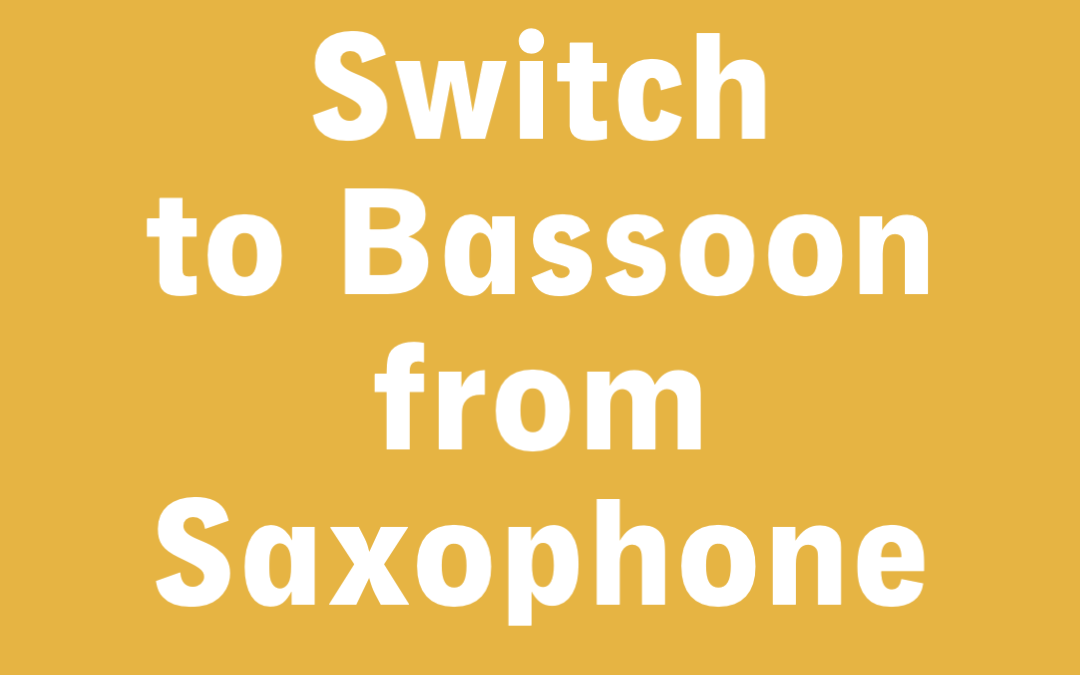One question that often comes up from band directors is, “Which of my students should switch to the bassoon?” Saxophonists are a great place to start! The saxophone and the bassoon have a fair amount in common (maybe more than we bassoonists like to admit!). This is especially true when it comes to embouchure, holding the instrument, and, if the student is coming from a tenor or baritone sax, the range is very similar. Of course there are some significant differences that will require adjustments, but keep reading and check out the video below to learn how to make the transition as smooth as possible!
Embouchure (01:26)
The most important difference going from the saxophone to the bassoon embouchure is that the teeth never touch the reed. Saxophonists are used to placing their teeth on the top of their mouthpiece, but the bassoon embouchure is primarily supported by the cushion of the lips. It is helpful to think about the mouth being like the opening of a drawstring bag that closes enough to create a round seal around the reed, but never pinches or bites the reed. Follow these steps to create a bassoon embouchure:
- Make a whistling face (or pretend like you can whistle). What this should do is push your lips slightly forward and bring the corners of your mouth in to create a round aperture.
- While you are making that whistling face, take your finger and roll your bottom lip just slightly over your bottom teeth to make a cushion for the reed to sit on.
- Put the reed in your mouth and bring your top lip just slightly forward in front of your bottom lip. This step may happen naturally when you make your whistling face, so you will want to use a mirror to determine what your embouchure looks like. The top lip simply acts as a cover to the top of the reed, so it doesn’t need to apply any pressure. The bottom lip is the primary support and cushion for the reed.
One of the things that makes the bassoon embouchure unique from other instruments is that it is very “tall” and open. In order to produce a good sound and avoid being sharp, there needs to be quite a bit of space in the oral cavity.
Articulation (03:02)
Similar to on the saxophone, the tongue will make contact with the tip of the reed to articulate. The tip of the bottom blade of the reed will make contact with just behind the tip of the top of the tongue. While tonguing, think about using a “doo” or “doh” syllable with the mouth shape. This helps to create enough space in the mouth and throat. The most important thing to creating a good bassoon sound is in the air support. The articulation lightly interrupts the air stream as you are playing, but it never stops the air completely. Practice tonguing on the reed by itself to better understand this concept.
Holding the Bassoon while Playing (05:01)
Saxophonists will likely already be comfortable with playing an instrument that comes across their body diagonally. However, the student won’t be familiar with using a seat strap to play. Make sure that the seat strap is all the way to the front of the chair so that, if you are looking at the player from the side, the bassoon is nearly perpendicular to the ground. In this way, the seat strap will hold the majority of the weight of the bassoon and the player simply needs to balance it.
Watch the video to see where to position your fingers in their “home base ” positions, and you will be ready to start learning some fingerings!
While these tips that I’ve outlined are a great place to start playing the bassoon, they are by no means a comprehensive guide. Subscribe to my email list to keep up to date on future videos, blogs, and other useful information for learning the bassoon!


Recent Comments